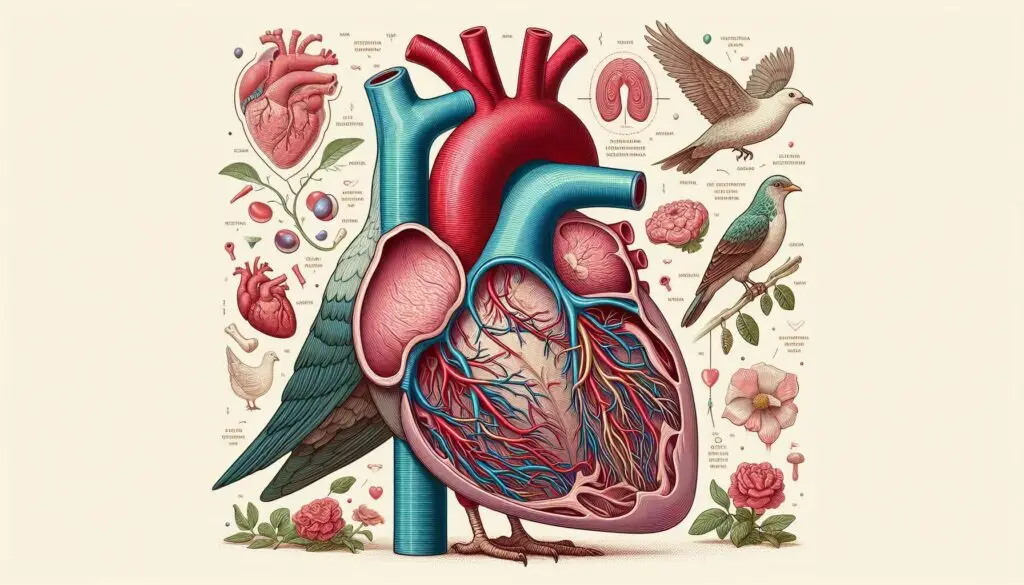Understanding Bird Circulation: An In-Depth Exploration

Understanding Bird Circulation: An In-Depth Exploration
Birds are remarkable creatures, and their circulatory system plays a vital role in their ability to thrive in various environments. This article delves into the intricacies of bird circulation, highlighting the unique features that set it apart from other vertebrates.
1. The Anatomy of the Bird Heart
Birds possess a four-chambered heart, similar to mammals. This design includes two atria and two ventricles, which allows for efficient separation of oxygenated and deoxygenated blood.
- Left Side: Oxygen-rich blood from the lungs enters the left atrium and moves into the left ventricle. From there, it is pumped throughout the body.
- Right Side: Deoxygenated blood returns to the right atrium from the body, flows into the right ventricle, and is sent to the lungs for oxygenation.
This separation is crucial for maintaining high metabolic rates necessary for flight.
2. Heart Functionality and Efficiency
The bird heart operates with remarkable efficiency. It beats faster than mammalian hearts, especially during flight. For example:
- Hummingbirds: Their heart rates can soar up to 1,200 beats per minute.
- Larger Birds: Species like ostriches have slower heart rates but still maintain high blood pressure.
This efficiency ensures that birds can deliver oxygen quickly to their muscles during intense activity.
3. Pulmonary Circulation in Birds
Birds have a unique respiratory system that complements their circulatory system. They utilize a flow-through lung system that allows for continuous air movement.
- Air Sacs: Birds possess several air sacs that facilitate respiration. These sacs ensure that fresh air flows through the lungs continuously, maximizing oxygen exchange.
- Cross-Current Gas Exchange: This method enhances oxygen uptake compared to mammalian lungs, where air moves in and out through the same passage.
This adaptation is vital for sustaining the high energy demands of flight.
4. Adaptations for Flight
The circulatory system of birds has evolved several adaptations specifically for flight:
- Higher Blood Pressure: Birds maintain higher blood pressure than mammals, which supports rapid blood flow during flight.
- Countercurrent Heat Exchange: This mechanism helps conserve heat by allowing warm arterial blood to warm cooler venous blood returning from extremities.
These adaptations ensure that birds can perform at their best during flight.
5. The Role of Blood Components
Birds have unique blood components that support their active lifestyles:
- Hemoglobin: Bird hemoglobin has a higher affinity for oxygen than mammalian hemoglobin, allowing for efficient oxygen transport.
- Red Blood Cells: Birds have more red blood cells per unit volume compared to mammals, enhancing their oxygen-carrying capacity.
These features are crucial for meeting the metabolic demands associated with flight.
6. Circulatory System Comparisons
When comparing bird circulation to that of other vertebrates, several key differences emerge:
| Feature | Birds | Mammals |
| Heart Chambers | 4 | 4 |
| Blood Pressure | Higher | Lower |
| Oxygen Affinity | Higher (hemoglobin) | Lower (hemoglobin) |
| Respiratory System | Flow-through | Alveolar |
These differences highlight how evolution has shaped bird physiology to meet their specific needs.
7. Conclusion
The circulatory system of birds is a complex and efficient network that supports their active lifestyles. With a four-chambered heart, specialized lungs, and unique adaptations for flight, birds exemplify how evolution has optimized physiology for survival in diverse environments.
For more pearls of Vets Wisdom:
https://wiseias.com/cardiac-muscle-energy-sources/






Responses